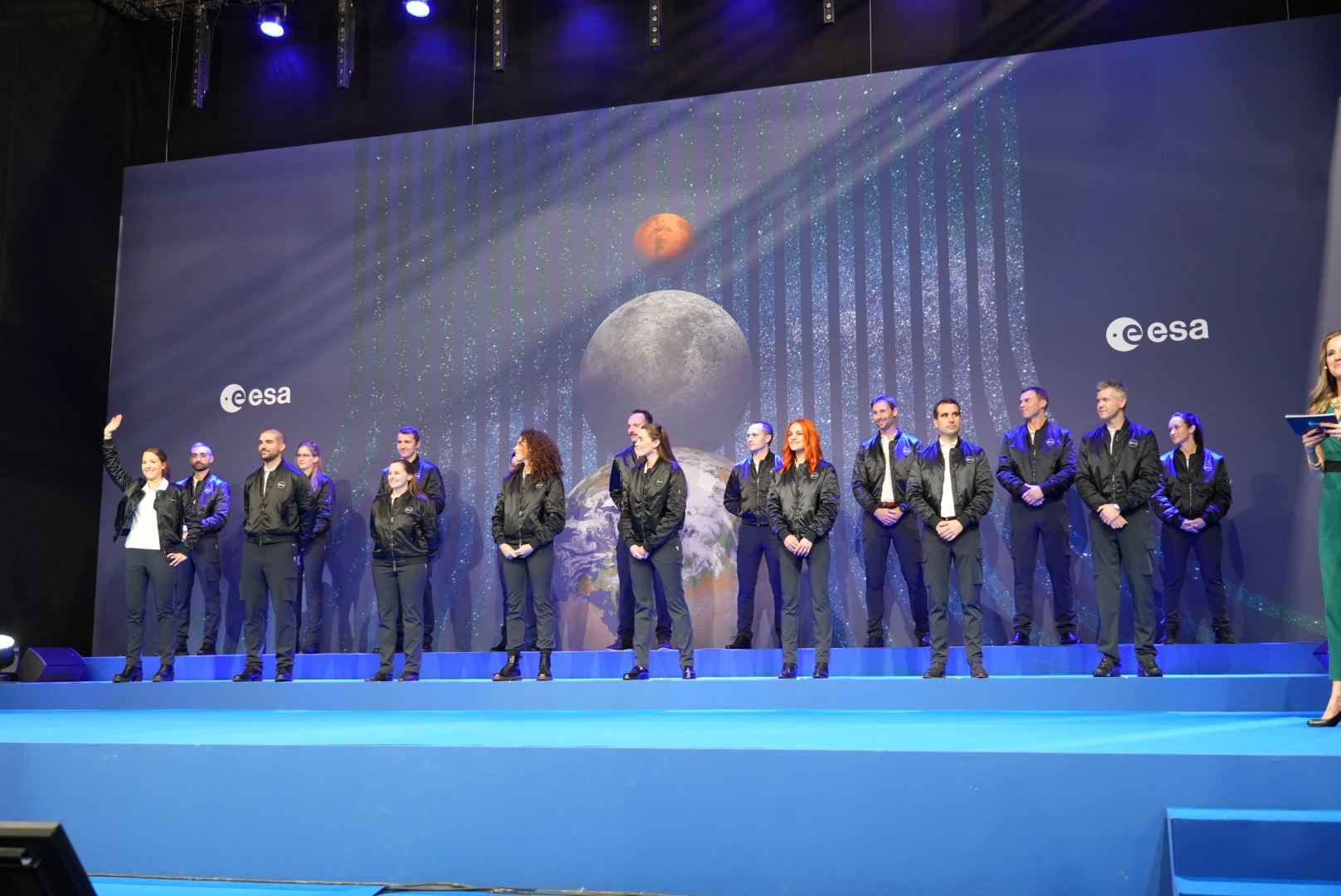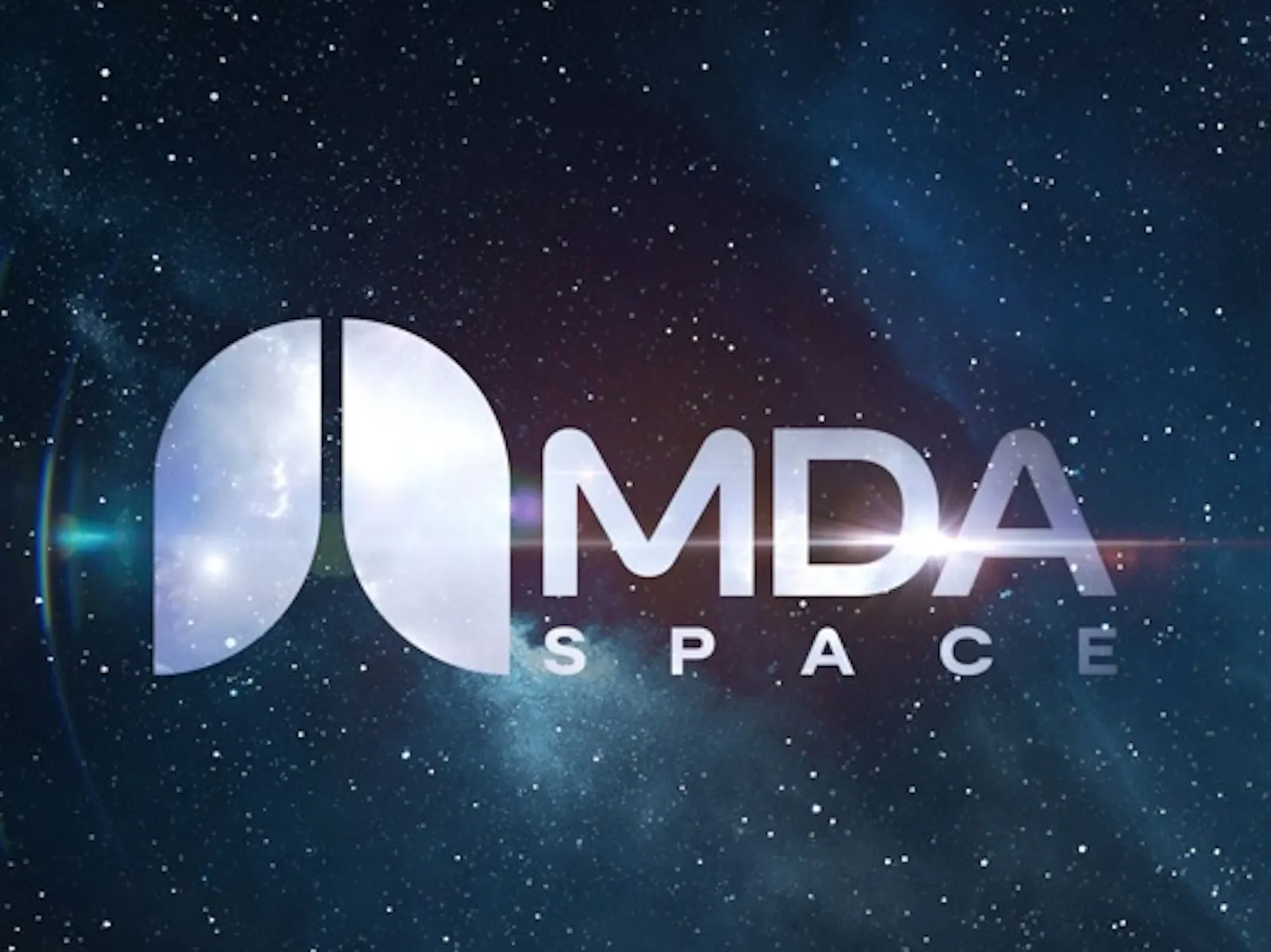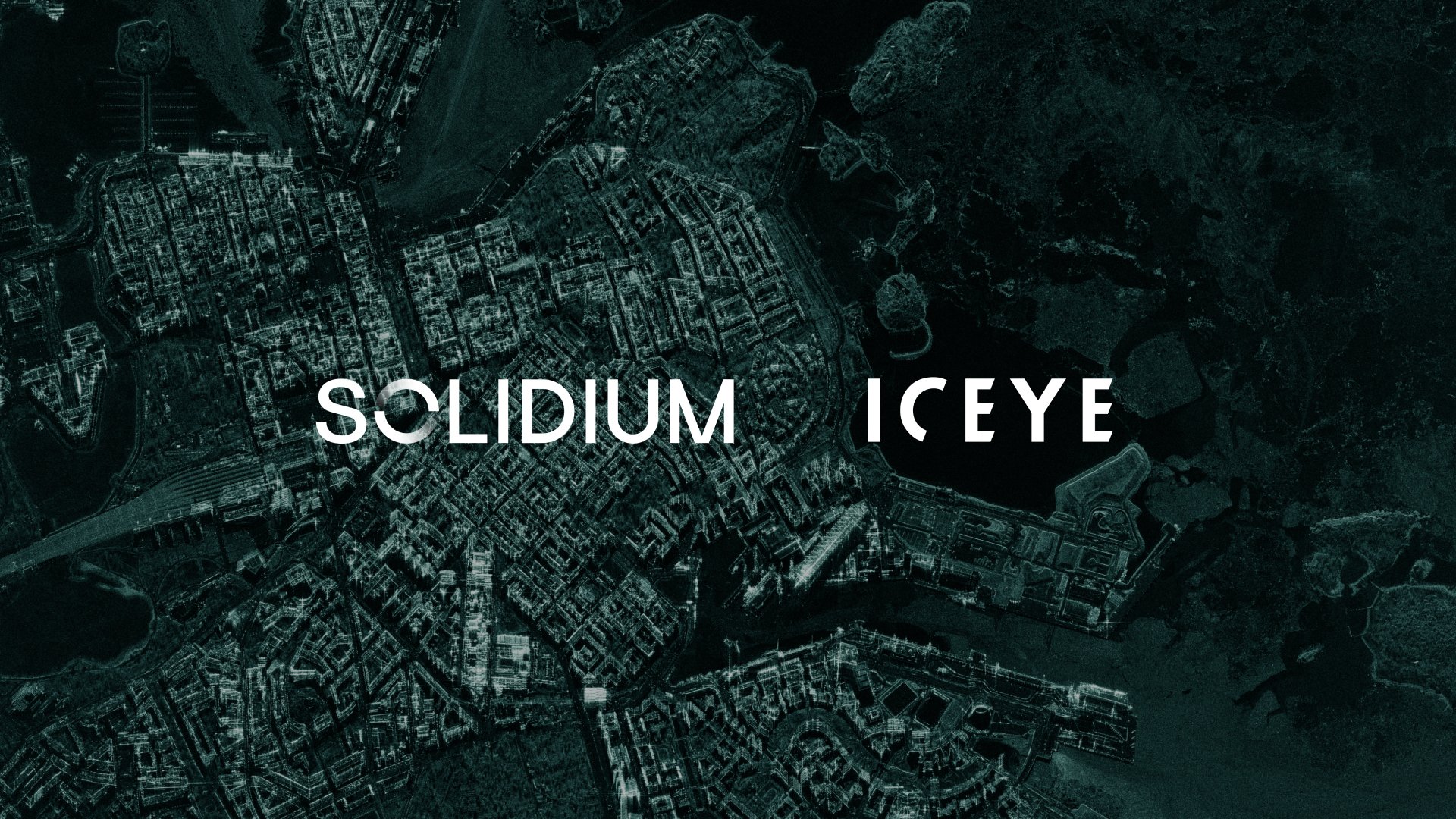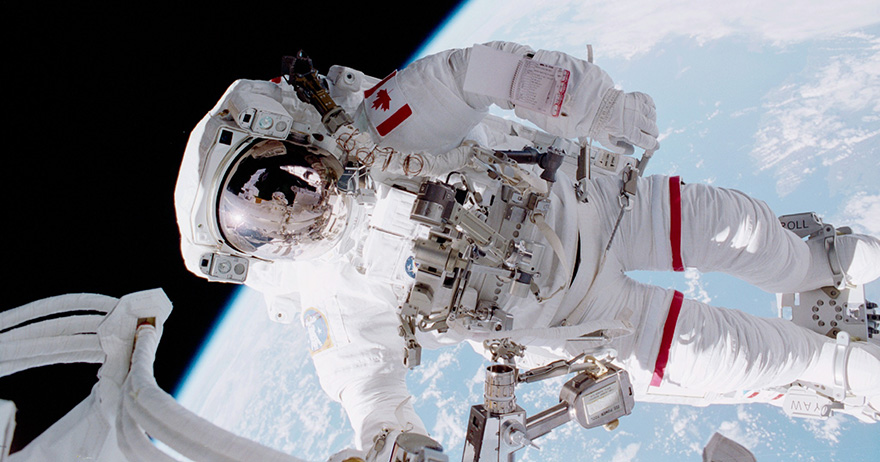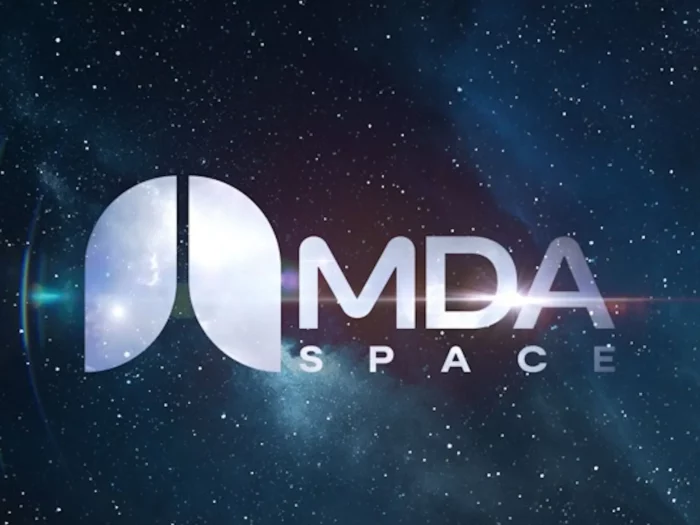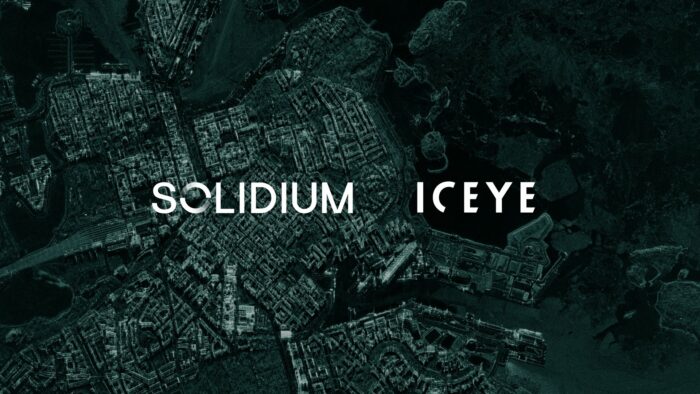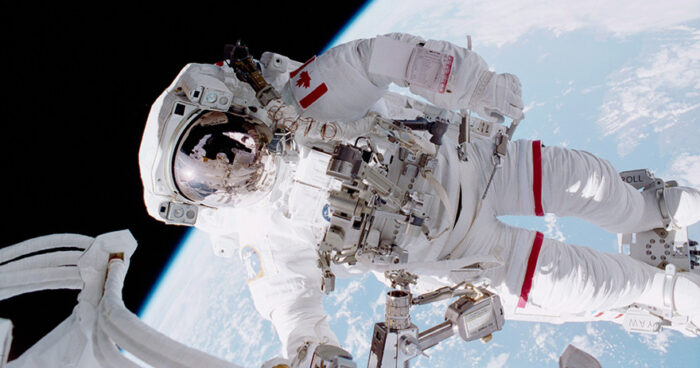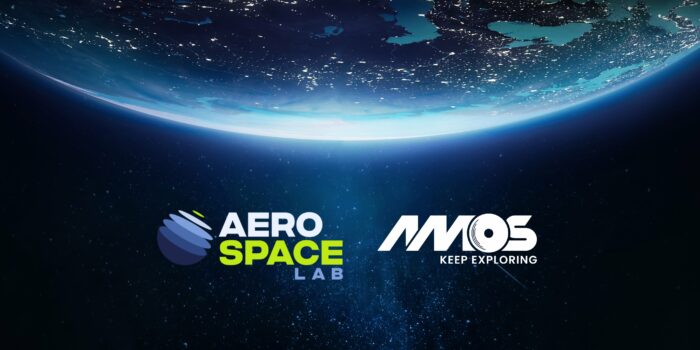The European Space Agency (ESA) announced its Astronaut Class of 2022 last November. The chosen astronauts went through a rigorous screening process including cognitive, technical, motor coordination, personality tests, psychometric tests, individual and group tasks, medical examinations and interviews. What exactly did they sign up for though?
Space travel exerts huge stress on the human body and mind, starting with the hours before launch. Astronauts have to sit in an almost lying position with their knees up and wait for the pre-launch checks to be carried out, sometimes for hours. The fluids in the body flow back to the torso from the legs. This fluid will soon want to leave the body but as going to the toilet is not possible, astronauts wear a “Maximum Absorbency Garment” (MAG), which basically serves as a diaper.
Vestibular system
Once in space, let that be on the International Space Station (ISS), other future space stations or the moon, space adaptation syndrome sets in. One of the root causes of this is ocotonia due to microgravity. Ocotonia affects the bio-crystals in the ears, making it hard for astronauts to establish which way is up. The body reacts to this as it had been poisoned, which leads to nausea and vomiting. This can last for days and can be extremely dangerous, as stomach contents entering the helmet of a space suit may drown the person wearing it.
Cardiovascular system
Blood pressure increases in the first 24-72 hours of being in space. The morphology of the heart changes pushing more blood into the head causing the face to swell up and the legs to become slimmer. This is referred to as the “puffy face and chicken legs” syndrome. Over time, this adjusts to midpoint of preflight standing and supine blood pressure, however, astronauts return to Earth with an orthostatic intolerance, which means they cannot stay standing for long. This is because after landing, blood flowing back into the legs deprives the brain of this vital tissue. Astronauts often become anaemic in spaces well, as their red blood cell count falls.
Decompression sickness
Decreased pressure in space causes an increased release of nitrogen from the body’s tissues resulting in joint and muscle pain, fatigue, and confusion. Astronauts try counteracting this by inhaling pure oxygen before launch.
Vision
Pressure changes also have an effect on intracranial pressure, flattening the back wall of the eyeball (globe flattening). Hypermetropia (farsightedness) develops in 1/3 of astronauts in the short term and 2/3 in the long term. Non-invasive methods for measuring, monitoring and treating intracranial pressure are being developed to mitigate this issue, while a certain diabetes medication seems to alleviate the symptoms.
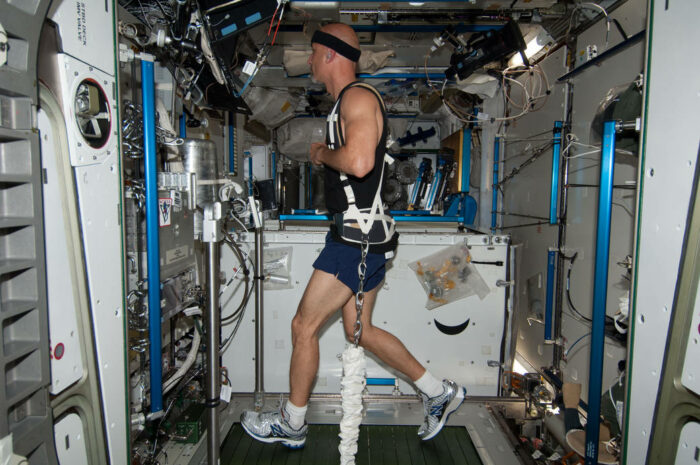
Bones and muscles
Microgravity promotes an accelerated aging process including the breakdown of bone and muscle mass. This process means an increased risk of kidney stones as well because of the elevated calcium numbers originating from bone breakdown. This increased number of calcium is deposited in the kidneys as there is nowhere else for it to go. To prevent muscle loss, astronauts train tied down with cords for several hours every day.
Digestive and endocrine system
Astronauts have reported a changed taste perception while in space. Metabolism also accelerates, the body needs more energy and craves carbohydrate-rich foods. As space food is quite limited though, astronauts tend to lose weight. Now, that’s a diet out of this world.
Physiological stress causes hormonal changes in the body as well. Increased circulation of corticosteroids and catecholamines leads to immune dysregulation which may result in cold sores and newly developed allergies.
Sleep Disorder
Astronauts aboard the ISS see 16 sunrises per 24 hours – one every 90 minutes – resulting in sleep disturbances due to light. Microgravity also contributes to this problem, as astronauts have to sleep while being strapped down.
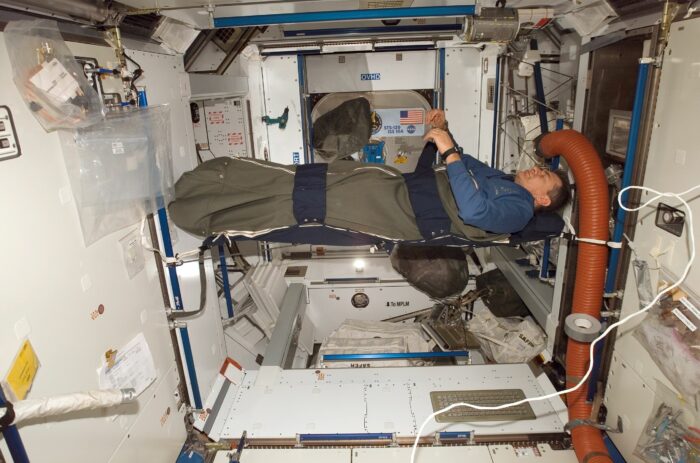
Cosmic radiation
The risk of cancer increases by 10% with every year spent in space due to cosmic radiation. This is especially dangerous for women as they are more prone cancer anyway. Research is currently looking into utilizing a certain type of fungus as a shield against this radiation.
Psychological effects
All these changes in the body, along with sleep depravation, weightlessness, staying in a confined space, drinking recycled urine, not being able to wash – just to mention a few – can have severe psychological effects on each individual. The mental state of astronauts is key to mission success and therefore they are being monitored regularly and there are also safety procedures in place in case someone is struggling in this regard.
Coming Back to Earth
When astronauts return to Earth, they are inspected and transported back to their training site to undergo further health examinations. Their ordeal does not stop here though: they can experience sever nausea, orthostatic intolerance, they need months of physiotherapy and a progressive exercise regime to regain lost muscle mass, as well as a nutritionist to regain their original weight and counteract any allergies they may have developed. However, some effects, such as bone mass loss, are irreversible.
Astronauts are usually advised to wait at least a year between two space missions to give the body’s different systems to get back to their original, healthy state. Would you give up your health in the name of science? Would you risk developing permanent health conditions to see or planet from above? Astronauts are considered to be heroes for many reasons, and this just might be one.
Featured image: Announcement of ESA Astronaut Class of 2022. Credit: ESA – P. Sebirot
If you found this article to be informative, you can explore more current space news, exclusives, interviews and podcasts here.
Share this article:
